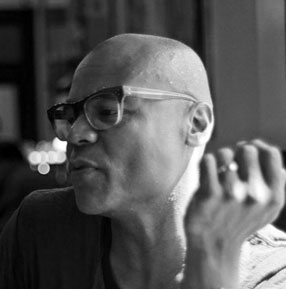Post-Dissertation-Intervention (i.)
I always tell my dancers. You are not defined by your fingertips, or the top of your head, or the bottom of your feet. You are defined by you. You are the expanse. You are the infinity. —Judith Jameson Elizabeth Alexander in The Black Interior writes about beauty, and how black artists resist monstrousness by their own self-definitions. I’m interested in this repair, too, but find comfort in the ugly. I love monsters. We both consider Brooks. In the poem, “The Life of Lincoln West,” when Elizabeth hones in on two white men describing little, black Lincoln, specie, I zip to the poem’s end, to what I read as Lincoln’s release: “it comforts him to be the real thing.” I align after June Jordan, whom am I when pinched, patted, and bent? Get behind her defense of Black English in On Call: How can I be who I am? We do with what’s given. I suppose, I may not share viewpoints, but still, I connect. Of prose, Meena Alexander says she uses it to clear the underbrush to make space for the poem. Vacate fields, ropes, a body. Don’t hate on Elizabeth. Do you. Frame how she pairs Brooks with Lawrence and Bearden. To argue, she opens walls, and living rooms. So, you like death? Is your project Fanon’s? Is this all a setup? Fan – on – it was a jolt in perception, then. Pieces of this, repeat. Toni Morrison, where she writes: the remains of what were left behind to reconstruct the world these remains imply. Ties to Brooks’s litany of the black body that endures, a stream of violent verbs to enter, under buzz and rows of halogen: burned, bricked, roped to trees, and bound. Now, what contexts shift in the stacks that glare before you? And how do you return, after, to what seized Brooks at Fisk, standing to face all those Blacks?
Copyright © 2014 by Ronaldo Wilson. Used with permission of the author. This poem appeared in Poem-A-Day on January 16, 2014. Browse the Poem-A-Day archive.
"'Post-Dissertation-Intervention (i),' maneuvers between poetic interrogation and critical analysis, exploring figurations of the Black Body through poetry, literature, and visual art. The poem’s stream of logic interposes fragments of texts with one another— dance, other poems, the essay— to raise questions, to pose alternative readings, and to examine literary lineages and contrastive theoretical approaches. Fusing essayistic ideation through the poem’s own form of lyric sense making was and is crucial in my thinking and writing practice within the theater of my then dissertation and through my current scholarly book project: Black Bodies |Black Fields: A Poetics of Violence."
—Ronaldo Wilson

